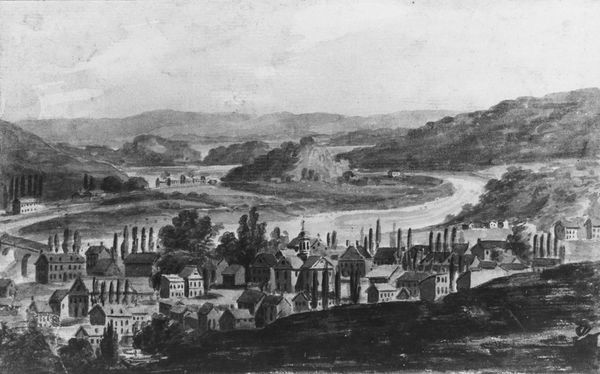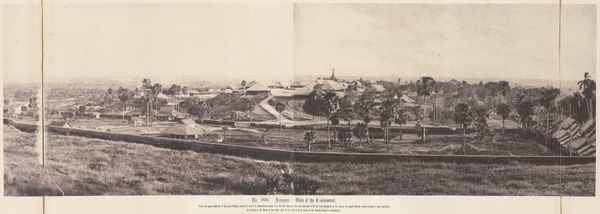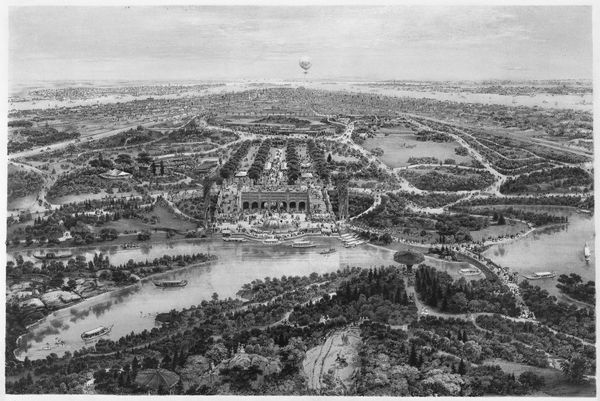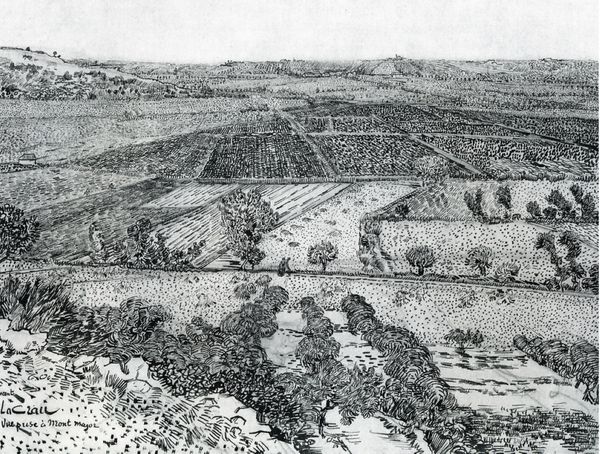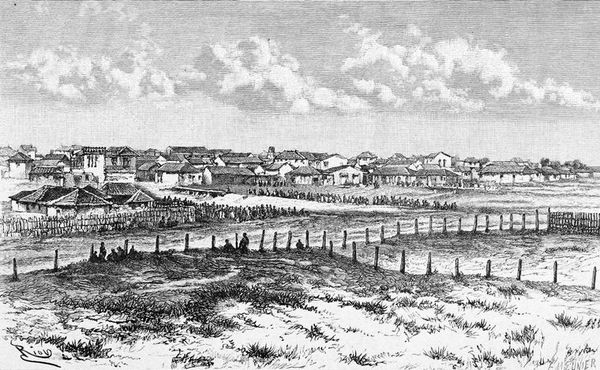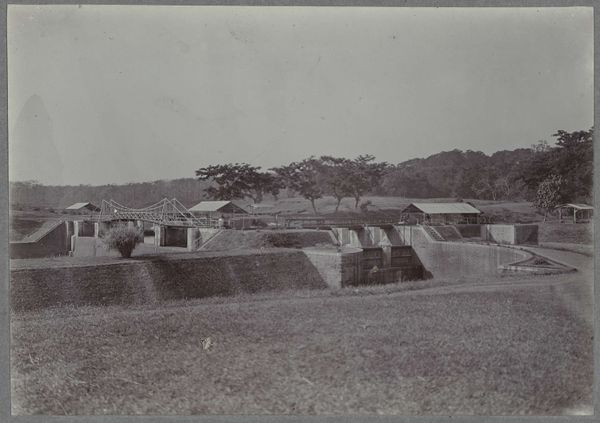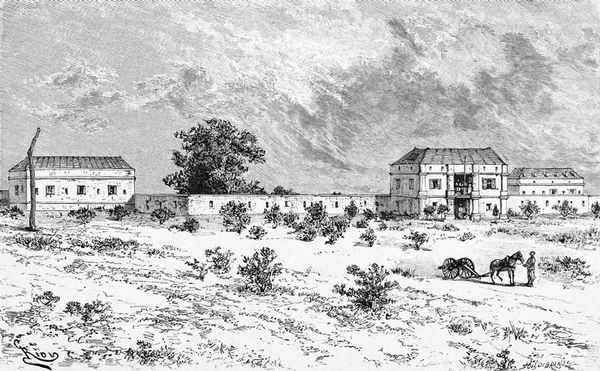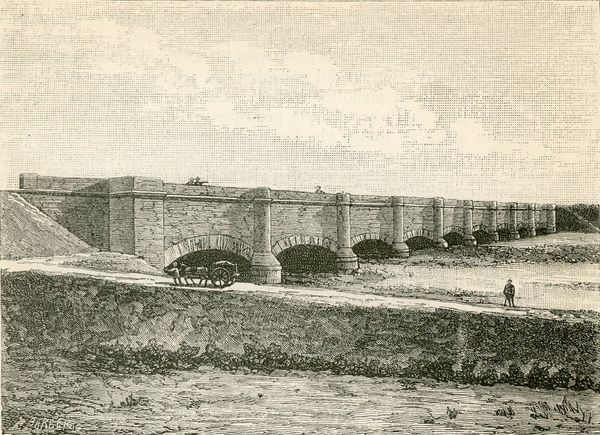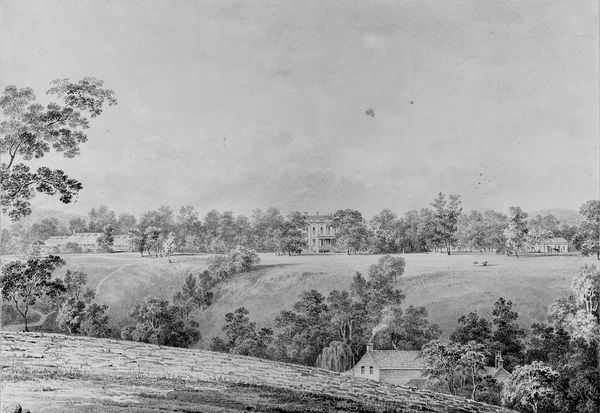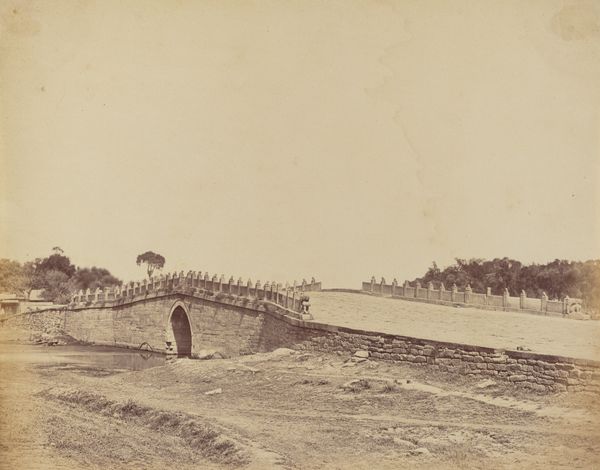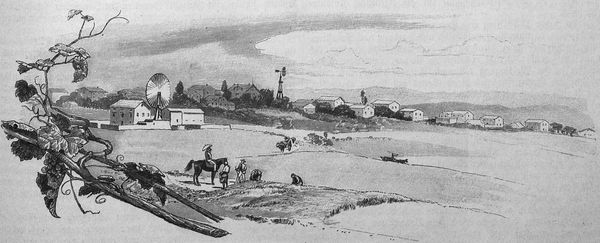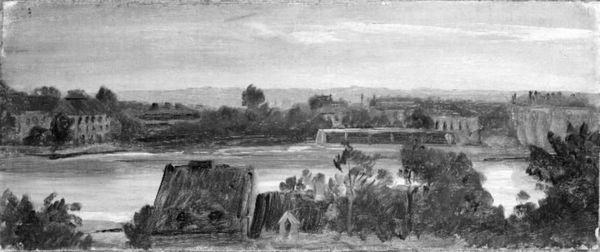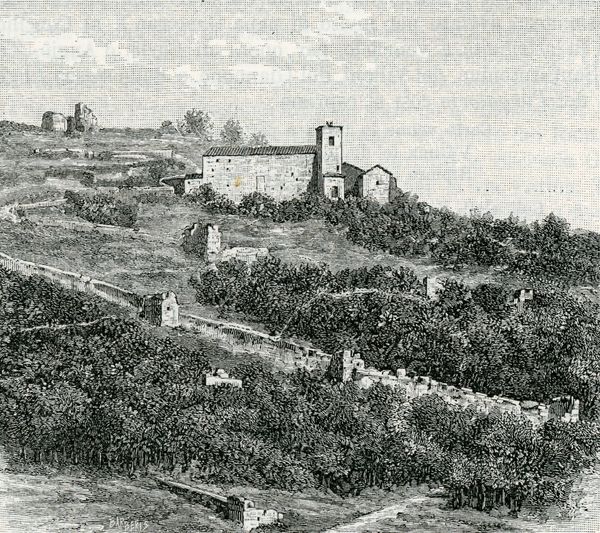
drawing, print, etching, paper, ink, architecture
#
drawing
# print
#
etching
#
landscape
#
paper
#
ink
#
architectural drawing
#
history-painting
#
architecture
Copyright: Public domain
Editor: Here we have Edouard Riou's "Bodo Fort, Interior and Exterior, Colonial French Africa," created around 1890, using ink, paper and etching techniques. It’s quite striking. There’s a definite emphasis on labor—all those tiny figures carrying loads into the fort. How should we interpret the stark imagery in the context of colonialism? Curator: Precisely. I see a highly constructed reality depicted here. Consider the materials: ink, paper, etching. The very process relies on extracting resources—raw materials to make the paper, pigments for the ink, the tools used to create the etching plates. Each step mirrors the colonial project itself. The controlled lines of the etching become symbolic of enforced order. Editor: So you're saying the medium itself echoes the message? It's interesting how a print, made to be reproduced, relates to colonization. Curator: Exactly. Prints facilitated the spread of imagery, bolstering the narrative of colonial "progress" and control back in France. What kind of labour, skill and knowledge enabled Riou to create such image of exploitation in distant Africa? What do you see when you look at the depiction of those people who carry logs and who must have constructed this very fort? Editor: I see them, in contrast with the architecture of the Fort, appear vulnerable but busy. Almost as if they are naturally part of the scenery. Do you think Riou’s technique of careful mark-making serves to rationalize colonial ambitions? Curator: Absolutely. The precision implies that the processes underway, including the colonial endeavor, are considered "rational" and manageable. But, who gets to write that history of materials and the bodies who extract them? Editor: That's such an insightful point. It makes me rethink the way even simple landscape drawings from that era could be so politically charged. It also points to the global consequences and cost of making even a single image. Curator: Agreed. Focusing on the material means of production, like Riou's drawing, forces us to confront the historical and ethical implications embedded within seemingly straightforward representations.
Comments
No comments
Be the first to comment and join the conversation on the ultimate creative platform.
